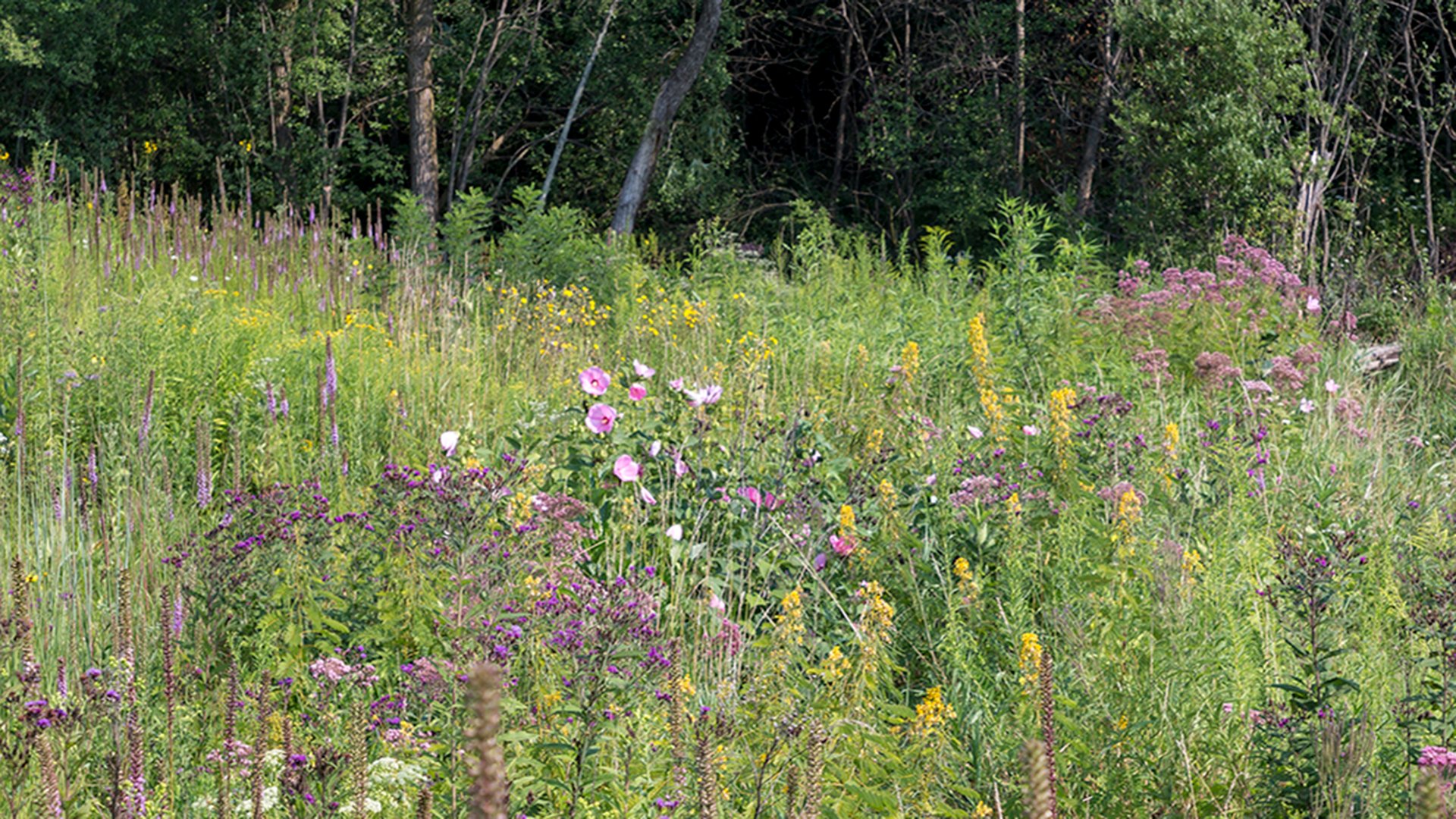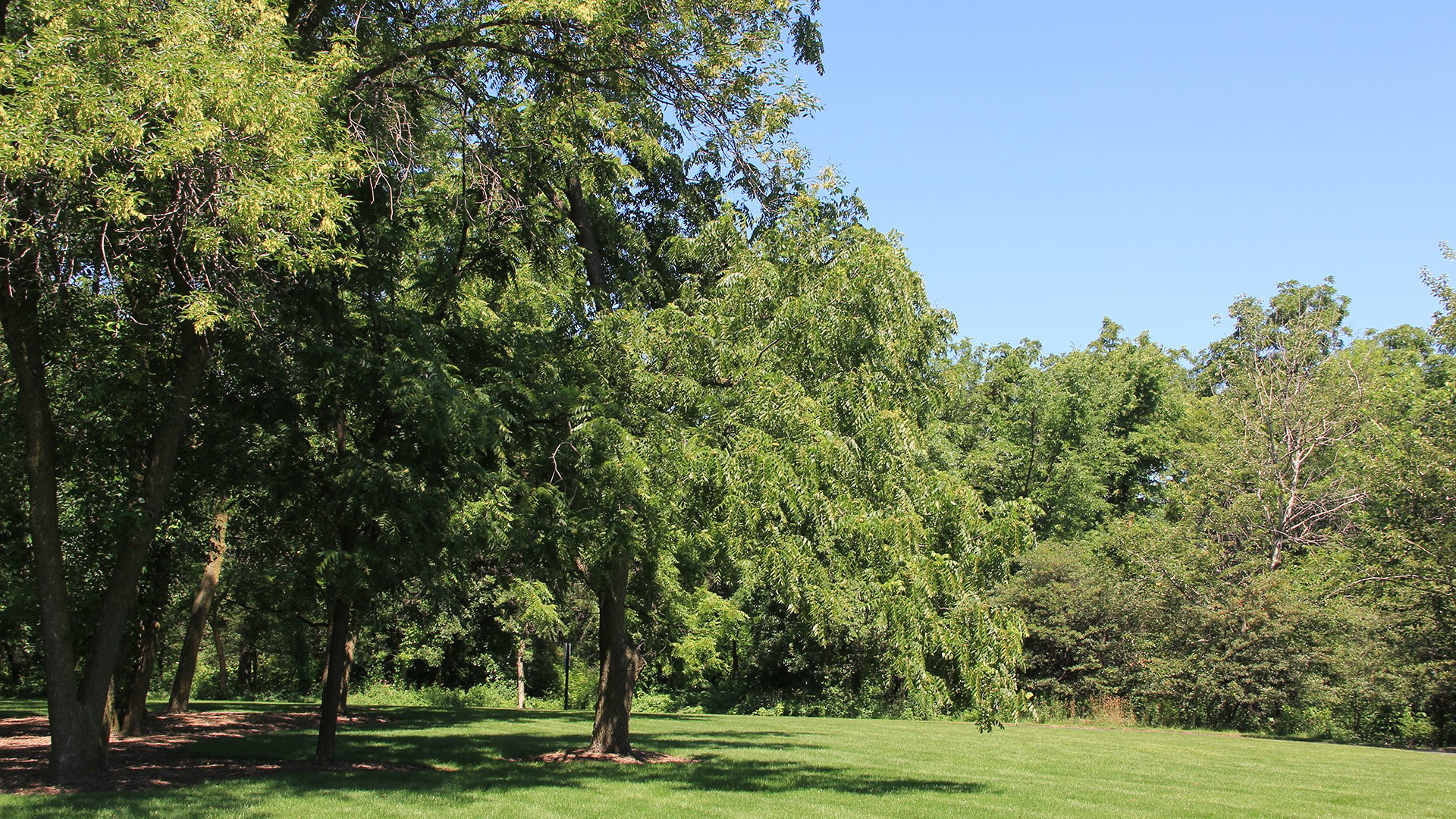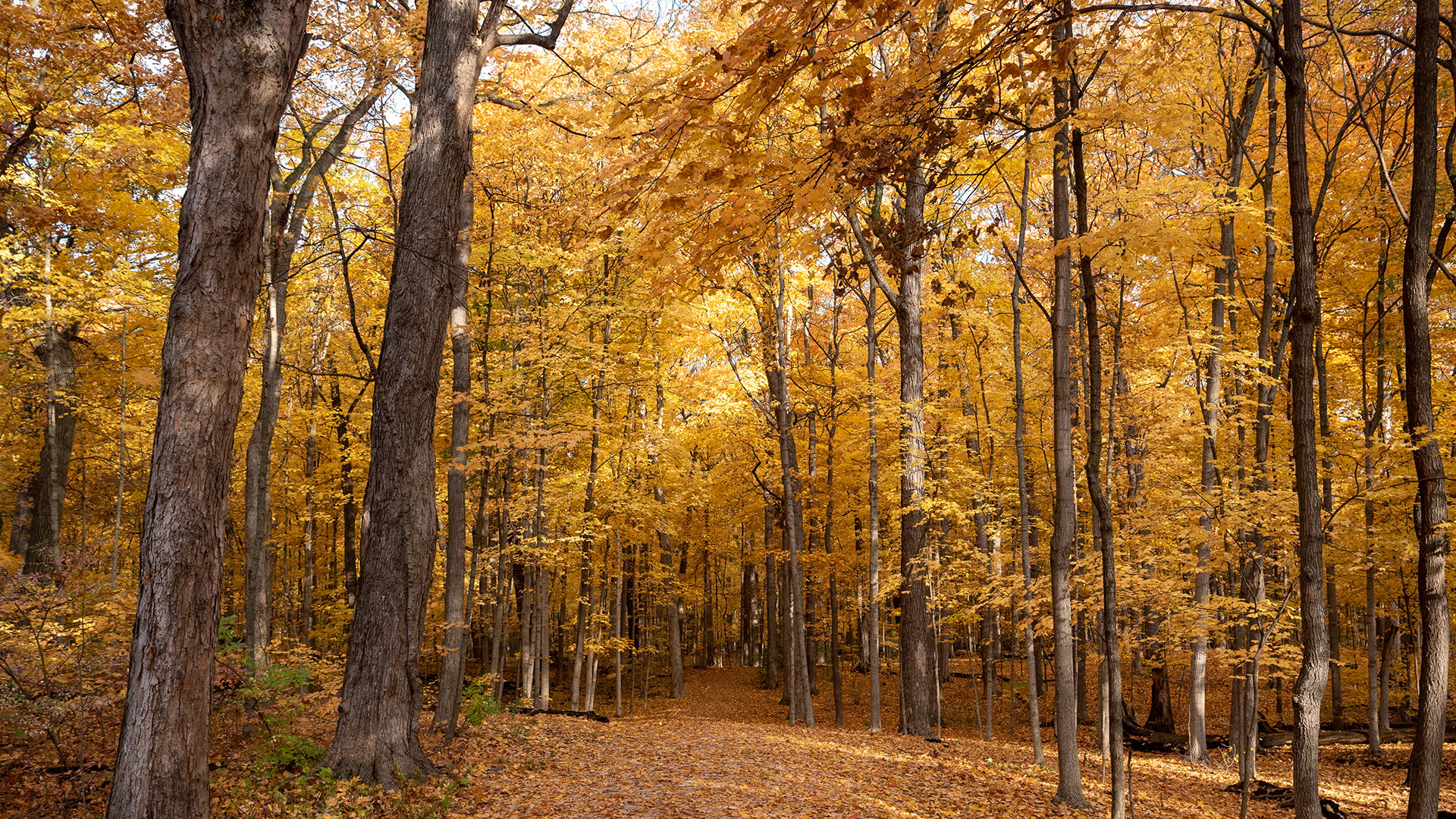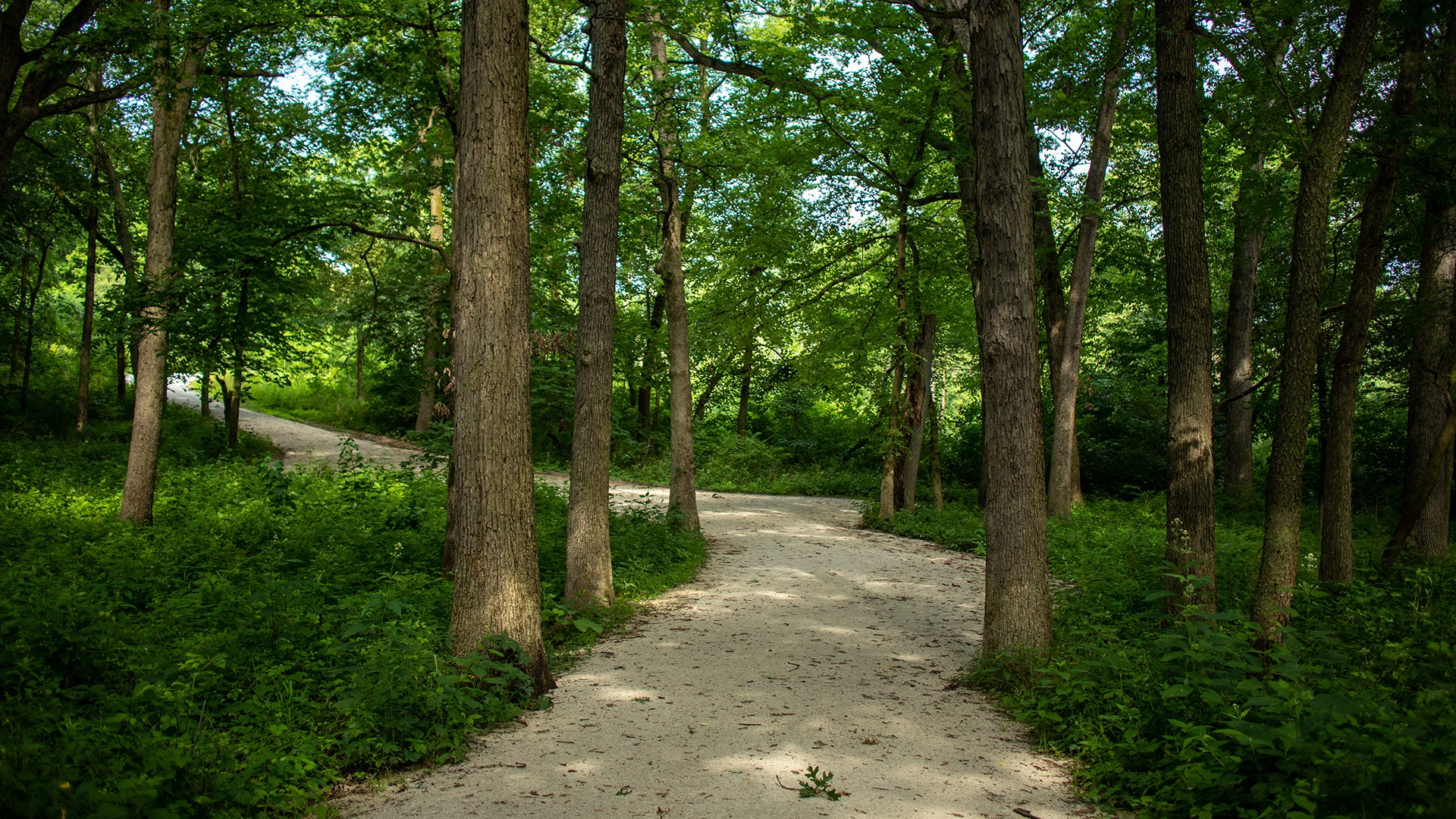
Fullersburg Woods
Oak Brook
Maps
The main entrance is on the north side of Spring Road 1 mile south of 31st Street.
A second parking lot is on the west side of Spring Road 0.1 mile west of York Road.
The Graue Mill and Museum parking lot is on the east side of York Road at the intersection with Spring Road.
Hours
The preserve is open one hour after sunrise to one hour after sunset.
General Info
Dogs are allowed at the forest preserve but must be on leashes under 10 feet long. Alcohol is prohibited. Read our complete rules and regulations.
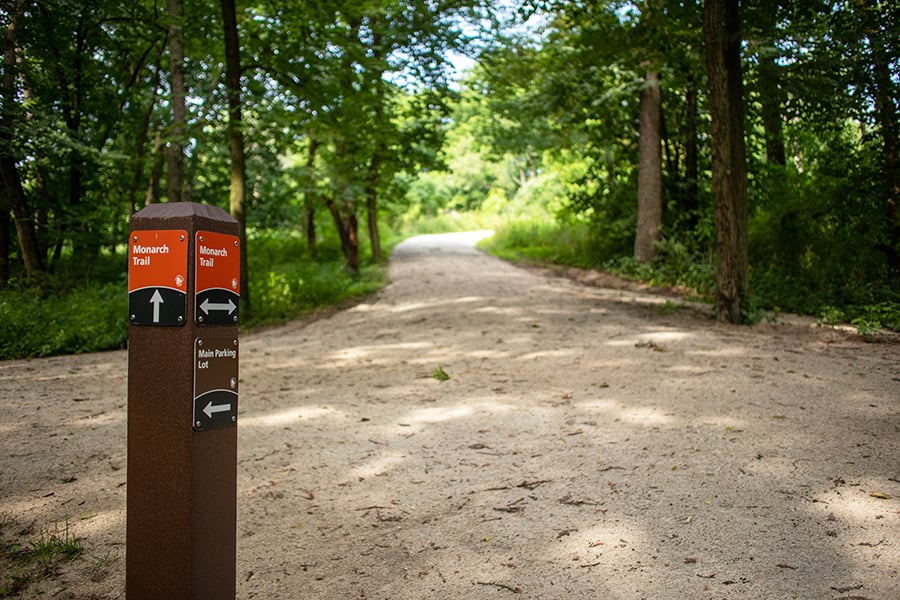
Things To Do
The center offers an introduction to the local environment and its native plants and animals.
Graue Mill and Museum is the only operating waterwheel gristmill in Illinois and is listed on the National Register of Historic Places.
Programs on milling, spinning, and weaving illustrate life between 1850 and 1890 and the effect mills had on the area’s culture. The mill is open for tours and programs mid-April to mid-November.
Miles of multipurpose trails are open to hikers, bicyclers, horseback riders, cross-country skiers and dog walkers. Take a self-guided tour of the 1.3-mile interpretive trail through lowland woods and restored prairies by foot, bicycle or cross-country skis to learn about DuPage County's natural history. A section of the trail connects the nature education center to the Graue Mill and Museum, Graue House and Ben Fuller House.
The Wildflower Trail, which starts near the visitor center and travels through the woods and restored prairie, showcases many native species of wildflowers. In the winter, snowshoes are available for rent from the nature education center.
Access Salt Creek via the canoe launch downstream of the Graue Mill dam.
Fish for largemouth bass, channel catfish, bluegill, crappie, northern pike and walleye along Salt Creek.
Anglers 16 or older who are not legally disabled must carry valid Illinois fishing licenses. Regulations, including creel limits and minimum lengths, are on our Fishing page.
Fullersburg Woods has several picnic tables and small shelters, and you can use the main shelter and picnic area if they're not being used by school groups. The central picnic shelter can be reserved in advance. Ground fires and grills are not allowed.
Host your birthday party, field trip, or corporate outing at Fullersburg Woods!
We offer two- and four-hour packages year-round from 10 a.m. to 8:30 p.m. Visit our Find It at Fullersburg page for details.
Natural Features
Fullersburg Woods Forest Preserve is Oak Brook offers a 220-acre prime wildlife haven in an urban setting, hosting a wide variety of wildlife, nesting songbirds and spring and fall migratory birds, especially warblers. It is home to the Fullersburg Woods Nature Education Center, which offers hands-on, interactive exhibits and native wildlife on display, and the historic Graue Mill and Museum, which features the only operating waterwheel gristmill in Illinois in its original spot. The nearby Ben Fuller House is made of small timber and one of the oldest balloon-frame structures in Illinois.
Fullersburg has trails for hiking, bicycling, horseback riding, cross-country skiing and snowshoeing, picnic shelters and areas, and fishing and boating on Salt Creek.
In the fall of 2023, the DuPage River Salt Creek Workgroup, a non-profit advisory group, will begin a largescale project to improve water quality in Salt Creek at Fullersburg Woods, which includes removing the dam. Learn more about the project in our FAQs. And hear how manmade dams impact rivers and streams in an informative video.
The oak woodlands and stretch of Salt Creek at Fullersburg Woods are home to beavers, red foxes, herons, egrets, nesting songbirds, and spring and fall migratory birds, especially warblers. The Night Heron Trail is a popular destination for fall color fans, too.
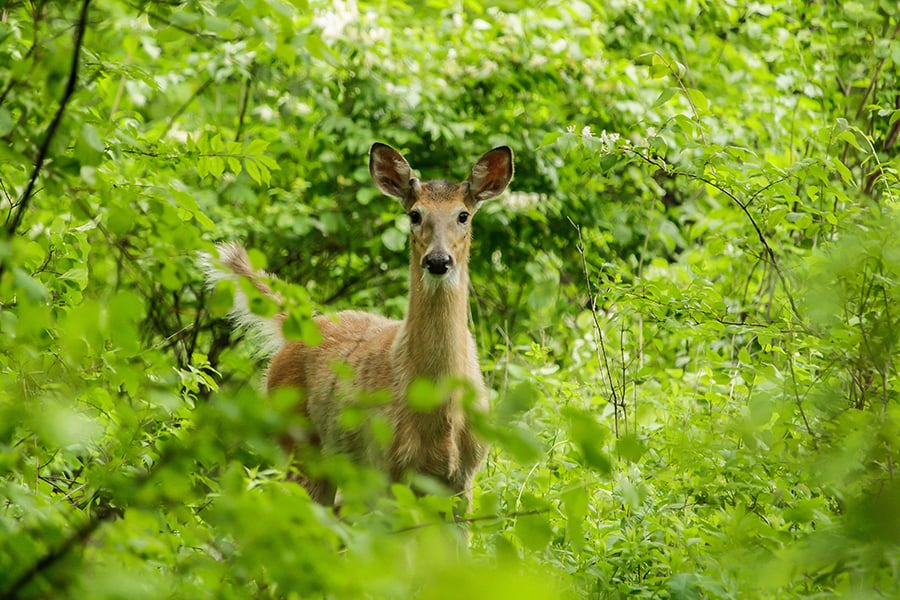
History
The area around Fullersburg Woods was originally known as Brush Hill but was renamed Fullersburg after Jacob Fuller, and his son, Benjamin, who platted the town in 1851. Fullersburg Woods opened to the public in 1920 and has a rich history. In the 1930s, a Civilian Conservation Corps camp was built here, and the visitor center and several of the shelters stand as remnants of that period. In subsequent years, the preserve was so heavily used that in 1969 picnicking was restricted and boating was prohibited because discharges and water runoff from surrounding communities polluted Salt Creek.
It was at this time that Fullersburg’s revival began. Dedicated to multiple-use land management, the District implemented plans to restore and preserve the natural surroundings, improve flood control and provide environmental education. As a result, the creek’s water quality has improved, trees and other plant communities are thriving, and a restored prairie adds to the preserve’s diversity.
